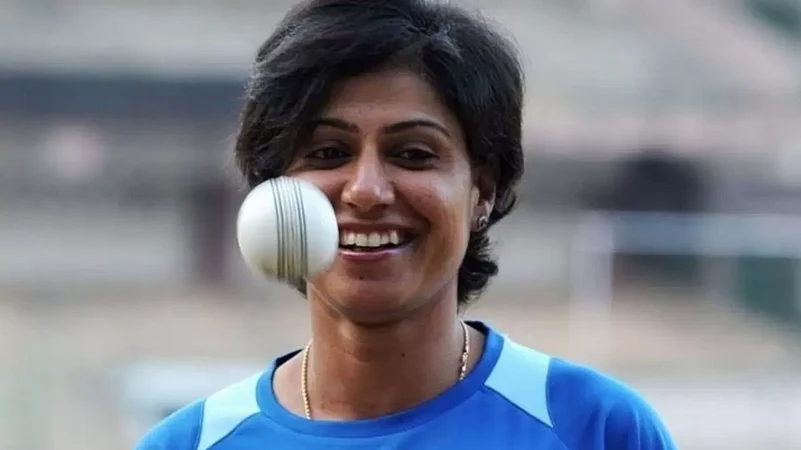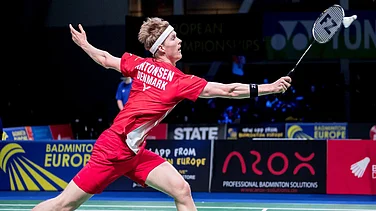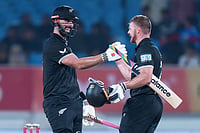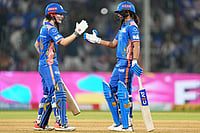Anjum Chopra’s graceful left-handed batting often inspired comparisons with England stylist David Gower. But when it comes to speaking, Chopra is more like Virender Sehwag – rapid and off the front foot. The former captain of the Indian women’s cricket team, the daughter of a golfer father and a car rallyist mother, spoke to Outlook on issues concerning women’s cricket and broadcasting. While Chopra feels that there is always scope for improvement, she sees the ‘gender glass’ as more than half-full, and has a positive take on the state of women’s cricket and the attitude of contemporary Indians towards women athletes.
Edited excerpts.
What are your thoughts on India’s win in the women’s under-19 T20 World Cup?
It’s an overwhelming feeling. Everything is falling into place for women’s cricket in India. The last couple of weeks have been brilliant for the women’s game [with the World Cup win and the announcement of the Women’s Premier League.]
Growing up in Delhi in the 80s, what reactions did you get when you started playing supposedly a ‘man’s sport’? Did your family’s background in sports strengthen you to take sexist comments on the chin?
I didn’t face any comments. Maybe my parents did. If not comments, then questions. As always, the “why are you encouraging a girl to take up sports, that too cricket?” kind of questions. Cricket might seem like a lucrative career today. That wasn’t the case back then. Yes, women were playing, but cricket wasn’t a proper women’s sport yet.
No doubt my family’s sports background helped me. Without their support and guidance, I wouldn’t have been able to even step onto a cricket field.
Were there occasions when the infrastructure was inadequate for women, in terms of dressing rooms or toilets?
I’ll just say there’s drastic improvement on that front. Now grounds are open to women players. And changing rooms are changing rooms, whether for men or women. Honestly, I don’t see anything as a problem right now. There is quite a bit of advancement in Indian women’s cricket. Yes, there is scope for improvement, but that holds true for everything. Yes, everything in this world is more male-centric, be it offices, sports, infrastructure. And it can always get better. But it is much better than what it was decades ago.
Your coach once made you face Manoj Prabhakar in practice. Was it empowering that he did that, and that Prabhakar did not hold back and bowled at his usual pace?
I was too young to feel empowered at that time. I was only hoping to not lose my wicket. I did not even know the meaning of the word ‘empowered.’ Also, I had been playing alongside famous Indian cricketers from a very young age. So I simply saw it as a challenge thrown at me by my coach, in which Prabhakar was the bowler and I was the batswoman.
You’ve breached another supposed male bastion – the commentary box. Geoffrey Boycott was against women commentating on men’s cricket, because, he said, “As good as the women are at their game, it bears no resemblance to the power and pace of men’s cricket.” What is your view?
When he made those comments (in 2020, after being dropped from a BBC panel), I only read them as his thoughts. That was his opinion. I wasn’t working with him, and was far away from that particular context.
Have you faced any gender-based discrimination in the commentary box?
Not at all. My experience has been very positive. Outside India, I never felt it [any bias]. Within India, I don’t work on international cricket. I work on domestic cricket. Currently [at ILT20], it’s been wonderful working with the likes of Virender Sehwag, Harbhajan Singh, Wasim Akram, Waqar Younis, David Gower, David Lloyd, to name some of my colleagues.
Is there a greater acceptance of women commentators?
It’s nice. But again, it’s about how you do your job, and not your gender. In our profession, you have to make your space. Yes, you might be given an opportunity, but at the end of the day, it’s not because of your gender that you sustain. You sustain because of your work.
Indian men and women players will now get the same amount in match fees, even though one part of the argument is that men’s cricket has higher TV ratings. What are your thoughts on this subject?
Nobody likes getting paid less. In any case, who should be paid how much is ultimately decided by the Board’s finance committee. But I’m happy that women cricketers will get the same fees as the men for the matches they play.
But there remains a big difference in the value of their contracts.
To theek hai. Dheere dheere aa jayega. (It’s okay. Over time the money will come for the women.)


























